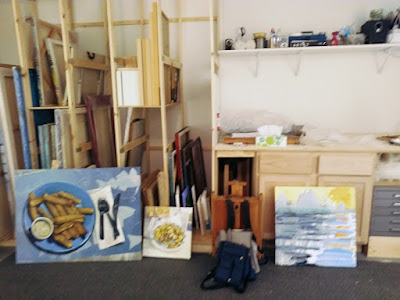It is Fall, which I love. But it is also flu season. I had the flu last
week and It has gone away - except for the laryngitis. Many people this
year had the flu accompanied with laryngitis. It has been many years
(20?) since I have had laryngitis.
Here are my thoughts on my recent experience:
- Laryngitis is a different thing when you have a dog. I walk my dog,
Delilah, off-leash in a wide grassy area along a cemetery. She always
listens to me, when she can hear me. I will call her, “Come here.” But
last week it came out as “k-h-.” She
didn’t seem to hear me. Actually, with those big floppy ears, I think
she heard me just fine. She was just taking the opportunity to have some
“me” time.
- It was strange to spend a couple days with no sound coming out of my
mouth and then to whistle for my dog. The whistle, not dependent at all
on my voicebox, came out clear and strong. It kinda scared me. I spent
the rest of the walk whistling, happy to make any kinda noise. I’m a
better whistler than singer, so it was fun to feel musical.
- Not only does Delilah understand many words, she also understands my
squirrel noises, finger snapping and thigh slapping. She is a very
conversant dog.
- People are very kind when you have laryngitis. When trying to order
food or anything else, people are very understanding and patient. This
is not so on the phone.
- The phone is too hard. People can’t see my lips moving or my body
language. Of course, my throat can feel just fine, but when it comes
time to actually talk on the phone every sense of good goes away when I
open my mouth. There was nothing but panic, restriction, and gasping.

- I used to play around with animation and,
in so doing, learned that most letter sounds are formed in just a few
ways: we place our tongue behind our teeth (letters d, t, j, soft g,
etc.), we place our teeth over our bottom lip (letters f and v), put our
lips together (m, n, b, p), and put our tongue between our teeth (L,
Th). This week, walking my dog and practicing what noises I can and
cannot make, I realized that some letter noises I could make rather
plainly, like "s" and "t." This made it easy to tell my dog to sit.
Although there was no "i" in the word, she knew what I meant. As I
thought about these things more, I realized that vowels are different
from consonants because you don’t use your tongue, lips or teeth to make
vowel sounds. Vowels are done with an open mouth. We simply control our
voicebox and the overall shape of the mouth to make the different vowel
sounds. Is the physical manner in which we can make these noises the
reason that consonants are separate from vowels? I love it when
something cultural is derived from the physicality of an activity.
- Practicing my lack of talking while walking my dog, I also noticed
that vowels are the only letters that have two unique sounds, the long
and short form – note vs. not. There are other letters, (c and g) that
can be pronounced two ways, but “c” sounds like either an “s” or “k”,
while a hard “g” does have its own unique sound, the soft “g” is just
another way of sounding like a “j.”
Although I am very happy to be getting my voice back, I enjoyed being
quiet. I turned off my phone because answering it was futile and
frustrating. This led to quiet evenings with an undistracted mind, an
enjoyment and focus on what was at hand. I was able to clean the house,
make some art, play a little more with Delilah and think about things. I
might have to schedule some "Laryngitis Days" into my calendar.







